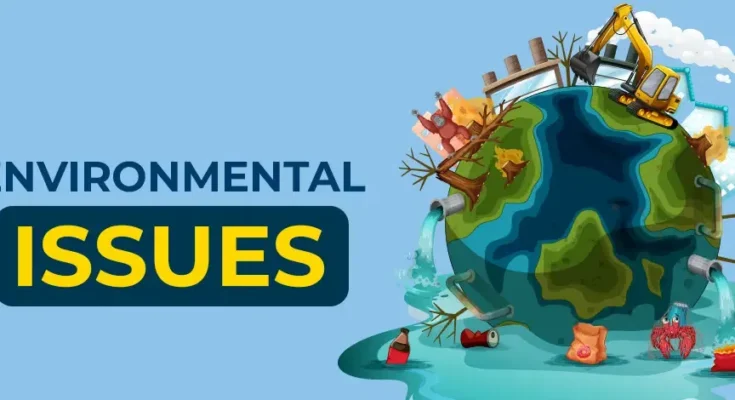The environment is very important to human existence on Earth because it provides our air, water and the natural resources to maintain our communities. Human activity has put excessive strain on natural systems causing impacts on the environment that are detrimental to biodiversity, human health, and climate stability. Understanding these different environmental impacts and how to solve them practically is important to remedying a more sustainable future.
Environmental impacts
1. Climate Change
Use of fossil fuels, together with deforestation, has raised levels of greenhouse gas emissions to an extent where it has created global warming. Increased temperatures lead to melting icecaps, sea level rise, and extreme weather events being more frequent.
2. Pollution
Pollution results from gas and particulate emissions from industrial processes, vehicles and agriculture. This leads to human inhalation of harmful particulates which contribute to respiratory health problems, acid rain, and the depletion of the ozone layer.
3. Deforestation
Forests are cut down for agriculture, for urban residential expansion, and for logging. Deforestation has many effects on the environment, including loss of biodiversity, disruption of ecosystems, and accelerated climate change by reducing the Earth’s capacity to absorb carbon dioxide.
4. Water Pollution
Industrial waste, agricultural runoff, and plastics (that wash into rivers, lakes & oceans) contributes to pollution where waterways are negatively affected. This reduces aquatic ecosystems and their diversity. Pollution also contaminates drinking water, and reduces food chains.
5. Loss of Biodiversity
Overhunting, destruction of habitat and climate change have made cavalcade of plant and animal species endangered. Loss of biodiversity means a perturbation of ecological balance and a reduction of natural system resilience.
6. Waste and Plastic Pollution
The overwhelming production of plastic and poor waste management has filled landfills and poured into our oceans nonbiodegradable products which threaten marine life, even food sources.
Solutions to Environmental Impacts
- Renewable Energy Transition
The full transformation from fossil fuels to clean energy technologies such as solar, wind, and hydro electrifying the world will reduce greenhouse gas emissions as well as reliance on nonrenewable resources.
- Transportation
Reducing pollution from air transport and carbon emissions from our transport choices by improving and promoting electric vehicles, cycling and public transport. Levels of Government can support transformational objectives in processes by building the infrastructure and offering incentives.
- Protection and Reforestation of Forests
Preserving forests that exist and planting trees to ensure things like carbon absorption, biodiversity, and local climatic regulation.
- Cleaner Production and Waste Management
Industry can adopt cleaner technology in their processes and individuals and communities can reduce, reuse or recycle to minimize waste. Important discussions that include biodegradable alternatives to plastic.
- Water Conservation
Better waste treatment facilities, farming practices and reducing or using less harmful chemicals can all help reduce water pollution and protect fragile aquatic


